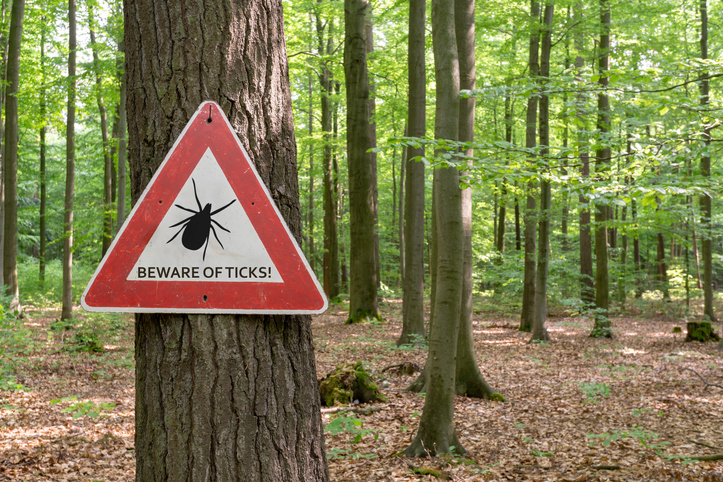Tick-Borne Illnesses in Georgia

According to the Georgia Department of Public Health, tick-borne illnesses increase during the spring and summer months. Ticks are more active as the weather gets warmer. They live near the ground in wooded and brushy areas and attach to people as they walk through these overgrown areas. People who camp, hike, hunt, and participate in similar outdoor activities are at risk of exposure to ticks.
There are several tick-borne diseases that can affect Georgians. Some may be familiar while others are lesser known illnesses.
Rocky Mountain Spotted Fever
This bacterial infection is carried by wood ticks and dog ticks. A characteristic symptom is a red rash that starts on the wrist and ankles and then spreads up the arms and legs to the trunk. Other symptoms include a high fever, fatigue, severe headache, chills, muscle aches, and joint pain that start within a week after the tick bite. The infection is treated with antibiotics.
Ehrlichiosis
This bacterial infection causes flu-like symptoms including moderate fever, chills, severe headache, vomiting, diarrhea, loss of appetite, and sometimes a rash in children. Can be treated with antibiotics but causes serious complications if left untreated.
Anaplasmosis
Although caused by a different bacteria, this disease has symptoms similar to those of ehrlichiosis. A rash is rare with anaplasmosis. Can be treated with antibiotics.
Lyme Disease
Deer ticks spread the bacteria that causes Lyme disease. Prevalence in Georgia is low, although people that visit New England, mid-Atlantic states, and the upper mid-west may become infected. The characteristic symptom is a red rash at the site of the bite that resembles a bulls-eye. Other symptoms include fever, headache, tiredness, muscle aches, and joint pain. Lyme disease can be successfully treated with antibiotics in the early stages.
Heartland virus
Scientists at Emory University recently confirmed that this tick-borne disease has been found in lone star ticks in Georgia. These ticks have a distinctive white spot on their backs. Symptoms include high fever, diarrhea, muscle pain, and low white blood cell and platelet counts. Cannot be treated with antibiotics.
Prevention of Tick Bites

Stay on clear paths as much as possible. Wear long sleeved shirts and pants with pants legs tucked into socks. Light colored clothing makes it easier to spot ticks before they attach. Use insect repellant and shower soon after coming indoors. Conduct visual checks on the body for ticks.
Tick Removal
Grasp tick firmly with tweezers and pull until tick releases from skin. Clean the bite with soap and water and wash hands thoroughly. Use alcohol on the bite site.
When to Call the Doctor
Contact RMD Primary Care if the tick has been attached more than 24 hours or if the entire tick cannot be removed. Call if the bite becomes infected or if symptoms such as fever, headache, unusual fatigue, joint pain, or stiff neck develop. The medical staff at RMD Primary Care is happy to answer your questions about tick bites.




